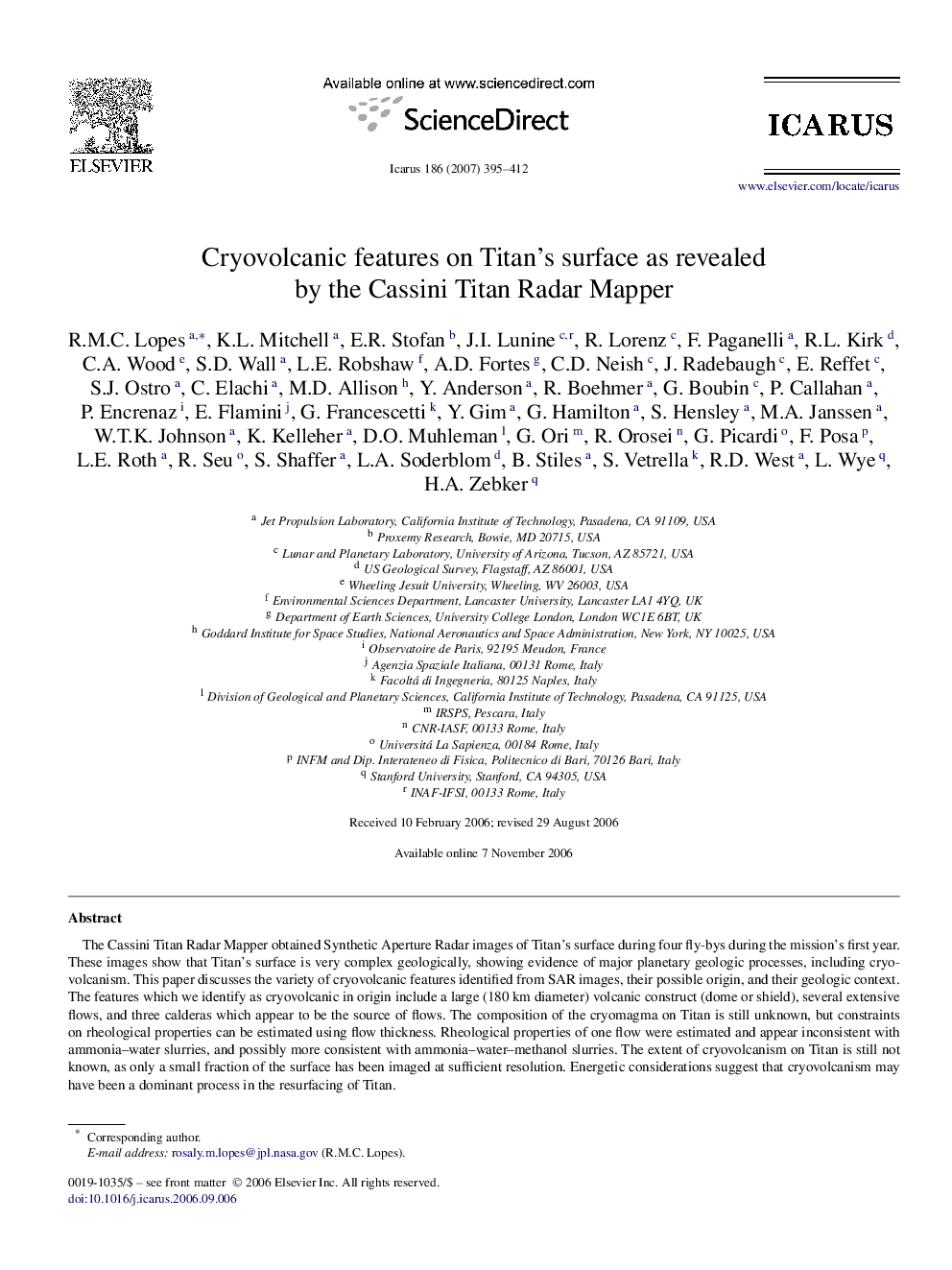| Article ID | Journal | Published Year | Pages | File Type |
|---|---|---|---|---|
| 10701775 | Icarus | 2007 | 18 Pages |
Abstract
The Cassini Titan Radar Mapper obtained Synthetic Aperture Radar images of Titan's surface during four fly-bys during the mission's first year. These images show that Titan's surface is very complex geologically, showing evidence of major planetary geologic processes, including cryovolcanism. This paper discusses the variety of cryovolcanic features identified from SAR images, their possible origin, and their geologic context. The features which we identify as cryovolcanic in origin include a large (180 km diameter) volcanic construct (dome or shield), several extensive flows, and three calderas which appear to be the source of flows. The composition of the cryomagma on Titan is still unknown, but constraints on rheological properties can be estimated using flow thickness. Rheological properties of one flow were estimated and appear inconsistent with ammonia-water slurries, and possibly more consistent with ammonia-water-methanol slurries. The extent of cryovolcanism on Titan is still not known, as only a small fraction of the surface has been imaged at sufficient resolution. Energetic considerations suggest that cryovolcanism may have been a dominant process in the resurfacing of Titan.
Keywords
Related Topics
Physical Sciences and Engineering
Earth and Planetary Sciences
Space and Planetary Science
Authors
R.M.C. Lopes, K.L. Mitchell, E.R. Stofan, J.I. Lunine, R. Lorenz, F. Paganelli, R.L. Kirk, C.A. Wood, S.D. Wall, L.E. Robshaw, A.D. Fortes, C.D. Neish, J. Radebaugh, E. Reffet, S.J. Ostro, C. Elachi, M.D. Allison, Y. Anderson, H.A. Zebker,
